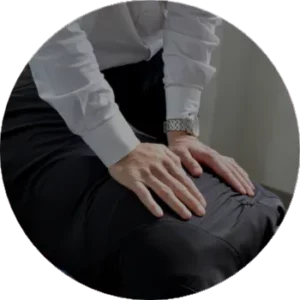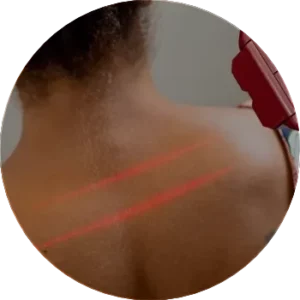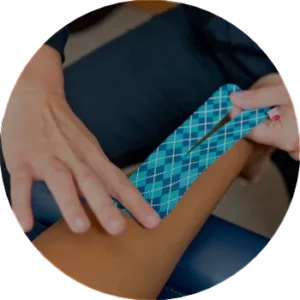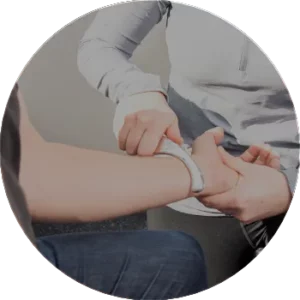At Columbia River Chiropractic, our extra training and specialty in extremities allows us to diagnose and treat many different ailments that other chiropractic clinics may not typically address. Yet of all the possible injuries that walk through our doors – shoulder, wrist, knee, etc. – we see and treat a very high percentage of foot pain patients. The good majority of these foot pain patients are further diagnosed with a disorder known as plantar fasciitis.
This is a very common diagnosis that gets thrown around with any type of foot pain, so it is always a good idea to have it further diagnosed by a specialist. However this article is designed to give you the nitty gritty on the cause, treatment, and more importantly – prevention, of this common yet potentially disabling foot problem.
Much like inside our office doors, it estimated that roughly 80% of all heel pain diagnosis fall under the plantar fasciitis label. It most commonly occurs in people that are set up for a lot of repetitive stress on their feet such as athletic, military, and obese individuals. It is a pain that is described as extremely sharp, typically on the bottom-inside portion of the foot, and feels the worst generally in the morning and gets better with movement throughout the day.
It is estimated that roughly 10% of the Americans will suffer from a plantar fascial injury at some point in their lifetime, and also costs the American people roughly $284 million each year in medical bills. These are very significant statistics, since plantar fasciitis can become a chronic and debilitating problem for some but is also potentially very preventable.
There has been some back-and-forth over the proper pathophysiology (cause) of plantar fasciitis over the years, but leave that up to us nerds to debate over. What is most essential for you to understand is that the mechanism for injury and pain is generally always the same – an altered stress to the plantar fascia.
The plantar fascia is a web-like fascial structure that originates from your heel and fans out over the bottom of your foot. This particular position of the tissue is extremely important as it is central to a mechanism (Windlass) that allows us to walk with more efficiency, utilizing our momentum and taking stress off our joints and tendons. However dysfunction of the joints of foot (of which there are 33) causes undo sheering forces, which ultimately over-stress all of these structures, and primarily the plantar fascia. This means that the true cause of plantar fasciitis is altered bio-mechanical function of the foot.
Where this dysfunction originates is tough to say as there are many potential causes. These can range from poor footwear, to past leg trauma, to weak muscles in the leg. Regardless of the cause, the bio-mechanical function is ultimately the source of the problem and needs to be corrected.
The only true way to do this is by restoring the movement of the joints of the foot (through specific chiropractic adjustments) in order to remove the sheer forces on the fascial structure. From there, proper coordination of the foot and lower extremity muscles and joints can be retrained through exercises and taping support. In some very chronic and/or severe cases of plantar fasciitis, Graston/IASTM therapy is extremely beneficial and sometimes orthotics can be warranted as well.
Depending on the severity of the symptoms, utilizing these protocols typically will result in effective and long lasting relief, especially if at-home instructions are followed through. However this recovery can take from 2 weeks to sometimes 3 months or more depending on the damage done to the plantar fascial fibers. As stated earlier in the article, because plantar fasciitis symptoms can be so severe (try imagining someone driving an ice-pick into the bottom of your heel!), prevention is your best bet.
We cannot stress this point enough, as plantar fasciitis is a process that typically happens over time so there aren’t many abrupt symptoms. Due to the mechanism of the plantar fascia developing micro-tears, much like a cavity in your tooth – early identification can help to avoid a painful and expensive problem. Additional risk factors would include:
- flat feet
- old shoes
- history of sprained ankles
- regular flip-flop use
- bunions
There are many other factors that play into plantar fasciitis in regards to foot health as a whole as well. The bottom line is that if your foot is not functioning properly, it is vulnerable to injury. Where the injury develops will be different for everyone – fasciitis, bursitis, tendinitis, neuromas – you name it. Pain will typically arise from our weakest link, so the goal is to prevent our feet from having any of these vulnerable spots.
Your best 3 options for foot pain prevention would be:
- Walk around bare-foot daily on soft, mobile ground i.e. sand, grass, dirt to work all of the little stabilizer muscles in our feet that typically become weak over time due to modern day footwear.
- Minimize the use of high-heels and heel lifted shoes.
- Have the joints of your feet properly assessed by a chiropractor (preferably a CCEP) to make sure there are no “cavities” in your foot that could arise to problems down the road.
As always, our goal at Columbia River Chiropractic is to educate, but making an appointment to see one of our doctors is your best bet towards getting direct answers. If you have any questions about the above article or in general, do not hesitate to contact us directly!
Your’s in health,
Dr. Kyle










